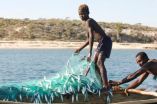A new radiotherapy technique significantly reduces irradiation of healthy tissue
2012-02-27
(Press-News.org) Researchers at the University of Granada and the university hospital Virgen de las Nieves in Granada have developed a new radiotherapy technique that is much less toxic than that traditionally used and only targets cancerous tissue.
This new protocol provides a less invasive but equally efficient cancer postoperative treatment for cases of cancer of the oral cavity and pharynx.
The study -conducted between 2005 and 2008- included 80 patients diagnosed with epidermoid cancer of the oral cavity and pharynx, who had undergone lymph node removal. The affected nodes were located by the surgeon during the intervention and classified into different risk levels. Classification allowed physicians to target the areas at a higher risk of recurrence. This way, neck areas at a lower risk of containing residual cancer cells were not irradiated. Researchers achieved both to minimize the side effects of radiotherapy, and to reduce treatment discontinuation, thus achieving the therapy to be more effective.
A Highly Toxic Treatment
Over 70% of oral and pharynx cancer treated with surgery require supplementary treatment with radiotherapy occasionally associated to chemotherapy, because of the high risk for recurrence and spread through the lymph nodes. Radiotherapy and chemotherapy are highly toxic, mainly due to the ulceration of the mucous membranes lining the oral cavity; toxicity leads may patients to stop the treatment, which significantly reduces the chances of cure.
By using the risk map obtained with the collaboration of the surgeon and the pathologist, an individualized treatment was designed and adapted to the specific risk level of recurrence in each neck area. The volume of tissue irradiated was significantly smaller than that usually irradiated with traditional techniques.
This trial was led by the radiation oncologist at the university hospital Virgen de las Nieves, Miguel Martínez Carrillo, and conducted in collaboration with the Services of Radiation Oncology, Medical Physics, Maxillofacial Surgery and Pathology of the university hospital Virgen de las Nieves, and the University of Granada Department of Radiology and Physical Medicine
After a three-year follow up, using this new technique, scientists achieved to reduce the volume of irradiated tissue in 44% of patients. By this new technique, irradiation of an average volume of 118 cc of tissue was avoided. A total of 95% of patients completed radiotherapy and presented significantly lower toxicity than patients treated with the traditional technique. Recurrence rates did not increase.
This study was coordinated by University of Granada professors Rosario del Moral Ávila and José Mariano Ruiz de Almodóvar Rivera. The results of this study will be published in the next issue of the journal Radiation Oncology.
INFORMATION: END
ELSE PRESS RELEASES FROM THIS DATE:
2012-02-27
Well-known internet marketers, Aaron and Sophia Rashkin along with members of the Loyal 9 Revolution have scheduled the "Legacy" on March 24 and 25, at the offices of the Loyal 9 in New Jersey.
The Legacy is an extremely focused event and follows the AFL Freedom Mastermind 2 that took place in late January at the Rashkin home office in beautiful Parker, Colorado. That 2 and 1/2 day live training experience brought together 12 inspired entrepreneurs from around the world to teach them the mindset and the successful internet marketing strategies used by these ...
2012-02-27
NEW YORK (February 24, 2012) – A new study by the University of California, Berkeley, Wildlife Conservation Society, and others uses a new scientific methodology for establishing marine protected areas in Madagascar that offers a "diversified portfolio" of management options – from strict no-take zones to areas that would allow fishing.
The methodology looks at existing information on the country's climate, along with dependence on fisheries and marine resources, and applies three different planning approaches to establish priorities for management along the entirety of ...
2012-02-27
Hydrofluorocarbons (HFCs), which have been used in recent years in increasing quantities as substitutes for CFCs, are also climatically very active and many are also extremely long-lived. In the renowned journal Science an international team of researchers recommends that the most potent of these gases also be regulated. This could save the positive «side effect» of the Montreal Protocol for the global climate.
It is regarded as the most successful international environmental agreement and has, to date, been ratified by 196 countries – the Montreal Protocol on Substances ...
2012-02-27
Pediatric cardiology researchers and clinicians from almost 50 centers from across the U.S. and around the world are gathering at the Cardiology 2012 Conference sponsored by The Children's Hospital of Philadelphia on Feb. 22-26 in Orlando, Fla. The news briefs below summarize 11 research abstracts selected by the conference organizers as featured presentations. The researchers leading these presentations comprise 6 physicians and 5 nurses.
New Early Warning Algorithm Detects Children's Early Cardiac Deterioration Before Inpatient Arrest
Most cardiopulmonary arrests in ...
2012-02-27
A controversial bill that would make big changes to Florida's car insurance coverage system should soon be on its way to a vote by the full House after getting the OK from the third and final committee to review it, according to OnlineAutoInsurance.com.
If the bill is signed into law, drivers who go to run their next Florida insurance quote comparison could be in for a bit of a surprise.
That's because the bill would, among other things, nix the current system in which motorists rely on personal injury protection (PIP) policies to pay for their medical bills following ...
2012-02-27
When Sifrhippus sandae, the earliest known horse, first appeared in the forests of North America more than 50 million years ago, it would not have been mistaken for a Clydesdale.
It weighed in at around 12 pounds--and it was destined to get much smaller over the ensuing millennia.
Sifrhippus lived during the Paleocene-Eocene Thermal Maximum (PETM), a 175,000-year interval of time some 56 million years ago in which average global temperatures rose by about 10 degrees Fahrenheit.
The change was caused by the release of vast amounts of carbon into the atmosphere and ...
2012-02-27
A life cycle assessment of growing crops for fuel as opposed to refining and using fossil fuels has revealed that substitution of gasoline by bioethanol converted from energy crops has considerable potential for rendering our society more sustainable, according to a Japanese study published in the International Journal of Foresight and Innovation Policy.
Kiyotada Hayashi of the National Agriculture and Food Research Organisation in Tsukuba and colleagues explain how biomass derived from sugarcane, sugar beet and other crops, has emerged as one of the most promising renewable ...
2012-02-27
New research from the University of Calgary's Hotchkiss Brain Institute (HBI) shows that using a CT (computerised tomography) scan, doctors can predict if patients who have had a transient ischemic attack (TIA) or minor stroke, with neurological symptoms such as weakness or speech issues, are at risk for another more severe stroke. This vital information can help doctors decide if stronger medications should be used to prevent future episodes, or if a patient can be safely sent home.
Currently, doctors can use a brain MRI (magnetic resonance imaging) scan to predict ...
2012-02-27
In the crash-car derby between heavy and light isotopes vying for the coolest spots as magma turns to solid rock, weightier isotopes have an edge, research led by Case Western Reserve University shows.
This tiny detail may offer clues to how igneous rocks form.
As molten rock cools along a gradient, atoms want to move towards the cool end. This happens because hotter atoms move faster than cooler atoms and, therefore, hotter atoms move to the cool region faster than the cooler atoms move to the hot region.
Although all isotopes of the same element want to move towards ...
2012-02-27
From spaghetti-like sea anemones to blobby jellyfish to filigreed oak trees, each species in nature is characterized by a unique size and shape. But the evolutionary changes that produce the seemingly limitless diversity of shapes and sizes of organisms on Earth largely remains a mystery. Nevertheless, a better understanding of how cells grow and enable organisms to assume their characteristic sizes and shapes could shed light on diseases that involve cell growth, including cancer and diabetes.
Providing new information about the evolution of the diversity of sizes and ...
LAST 30 PRESS RELEASES:
[Press-News.org] A new radiotherapy technique significantly reduces irradiation of healthy tissue



